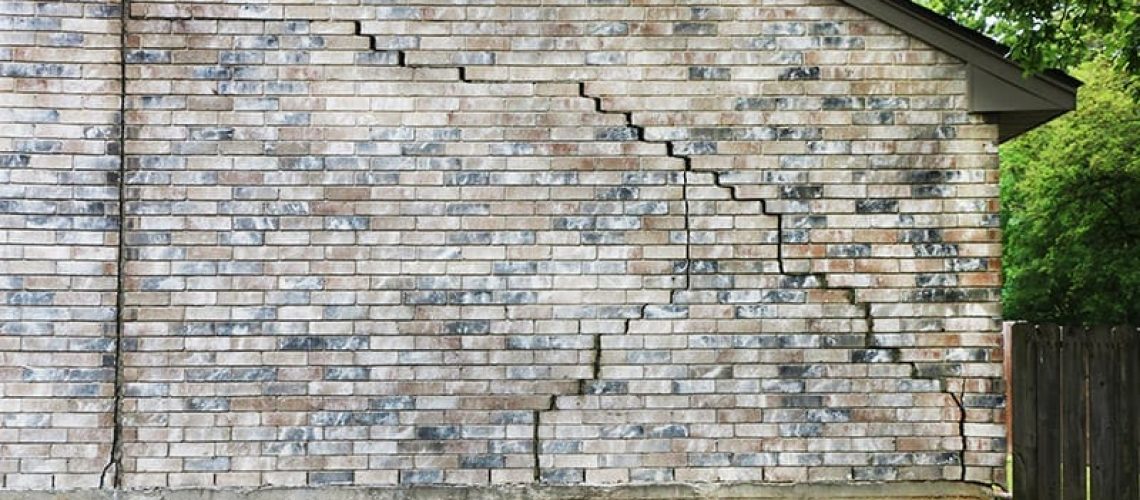When it comes to ensuring the safety and longevity of a home, structural integrity lays the foundation for everything else. Home inspectors, armed with a critical eye and a wealth of knowledge, play a pivotal role in uncovering potential structural safety issues that may be hidden beneath the surface. In this comprehensive guide, we will delve into the most common structural safety concerns that home inspectors frequently identify, shedding light on the significance of addressing these issues for a secure and stable living environment.
1. Cracks in the Foundation
Issue: Visible Cracks in the Foundation Walls or Slab
One of the most prevalent structural safety issues uncovered by home inspectors is the presence of cracks in the foundation. These cracks can manifest as hairline fractures or more significant gaps, and they may be found in the foundation walls or the slab. Cracks can result from various factors, including settlement, soil movement, or water damage.
Why It Matters:
Cracks in the foundation can compromise the structural stability of the entire home. They may indicate ongoing issues that, if left unaddressed, could lead to further damage and costly repairs. Identifying the cause of the cracks and implementing necessary repairs is crucial for maintaining a solid foundation.
2. Sagging or Uneven Floors
Issue: Floors that Sag or Display Unevenness
Sagging or uneven floors are common structural safety concerns identified by home inspectors. These issues may result from various factors, including foundation settlement, joist problems, or inadequate support. The unevenness of floors may be noticeable as slopes or dips in certain areas of the home.
Why It Matters:
Sagging or uneven floors can indicate structural problems that affect the overall stability of the home. Addressing the underlying causes and providing adequate support is essential for preventing further structural damage and ensuring a level and secure living environment.
3. Wood Rot and Termite Damage
Issue: Deterioration of Wooden Structural Components
Home inspectors frequently discover wood rot and termite damage during their examinations. These issues can affect wooden structural components such as beams, joists, and framing. Wood rot is typically caused by water damage, while termites can compromise the integrity of wood through their feeding activities.
Why It Matters:
Wood rot and termite damage weaken the structural elements of a home, leading to potential safety hazards. Timely intervention, including repairs and addressing the underlying causes, is crucial for preventing further deterioration and maintaining the strength of wooden structures.
4. Issues with Load-Bearing Walls
Issue: Compromised Load-Bearing Walls or Supports
Load-bearing walls and structural supports are integral to the overall stability of a home. Home inspectors often identify issues such as compromised load-bearing walls due to removal of structural components, improper alterations, or inadequate supports. These issues can weaken the structural framework of the home.
Why It Matters:
Compromised load-bearing elements can lead to structural instability, posing a serious safety risk. Ensuring that load-bearing walls and supports are intact and properly designed is essential for the safety and longevity of the home.
5. Inadequate Roof Support
Issue: Roof Truss Problems or Insufficient Roof Support
Problems with roof trusses or insufficient roof support are common structural safety concerns identified by home inspectors. Issues may include sagging rooflines, improperly installed trusses, or compromised structural elements in the attic. These problems can result from factors such as poor construction practices or water damage.
Why It Matters:
Inadequate roof support can lead to roof failure, posing risks to occupants and causing extensive damage to the home. Addressing roof truss problems and ensuring proper support is crucial for maintaining the integrity of the roof structure.
6. Improperly Ventilated Crawl Spaces and Basements
Issue: Inadequate Ventilation in Below-Ground Spaces
Crawl spaces and basements are susceptible to structural issues related to poor ventilation. Home inspectors often identify problems such as inadequate venting, excessive moisture, or lack of proper insulation. These issues can lead to problems like wood rot, mold growth, and compromised structural integrity.
Why It Matters:
Inadequate ventilation in below-ground spaces can result in structural deterioration, affecting the foundation and supporting structures. Implementing proper ventilation measures is crucial for preventing moisture-related damage and maintaining the stability of below-ground spaces.
7. Foundation Settling or Shifting
Issue: Visible Signs of Foundation Settling or Shifting
Foundation settling or shifting is a common structural concern discovered by home inspectors. Visible signs may include doors or windows that no longer close properly, cracks in walls, or a noticeable tilt in the structure. These issues may be attributed to soil movement, poor foundation construction, or water-related problems.
Why It Matters:
Foundation settling or shifting can lead to significant structural problems, impacting the entire home. Identifying the cause and implementing corrective measures is crucial for preventing further settling and maintaining a stable foundation.
8. Issues with Masonry and Brickwork
Issue: Deterioration of Masonry or Brickwork
Masonry and brickwork are essential components of many homes, providing structural support and aesthetic appeal. Home inspectors frequently identify issues such as cracked or deteriorating mortar, loose bricks, or compromised structural integrity in masonry elements.
Why It Matters:
Deterioration of masonry or brickwork can compromise the structural integrity of walls and other structural elements. Addressing issues promptly, including repointing and repairing damaged areas, is essential for maintaining the strength and appearance of these components.
9. Pest Infestations and Structural Damage
Issue: Infestation of Pests Causing Structural Damage
Pest infestations, such as termites or carpenter ants, can result in structural damage to a home. Home inspectors often uncover evidence of pest activity, including damaged wood, hollowed-out structural components, or visible trails left by insects.
Why It Matters:
Pest-induced structural damage can weaken the home’s framework, posing safety hazards and leading to costly repairs. Implementing pest control measures and addressing the structural damage is essential for maintaining the safety and stability of the home.
10. Issues with Retaining Walls
Issue: Failure or Compromise of Retaining Walls
Retaining walls are essential for preventing soil erosion and maintaining the stability of the landscape. Home inspectors frequently identify issues such as cracks, bulges, or signs of failure in retaining walls. These problems may result from poor construction, inadequate drainage, or soil pressure.
**Why It Matters:**
Failure or compromise of retaining walls can lead to soil erosion, slope instability, and potential damage to structures on the property. Ensuring proper construction and addressing issues promptly is essential for maintaining the effectiveness of retaining walls.
Conclusion
The structural integrity of a home is the cornerstone of its safety and durability. Home inspectors, with their keen eye for detail, play a critical role in uncovering potential structural safety issues that may impact the well-being of occupants and the longevity of the property. From foundation cracks to roof support problems, addressing these common concerns is paramount for ensuring a home that not only stands the test of time but also provides a secure and stable haven for its residents. In the realm of homeownership, a proactive approach to structural safety is key to enjoying the peace of mind that comes with a sound and resilient home.
To learn more about the most common safety issues discovered by home inspectors, check out our article “Safeguarding Homes: Common Safety Issues Uncovered by Home Inspectors“.


